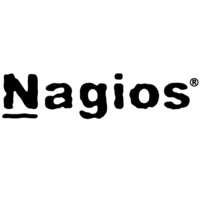Need advice about which tool to choose?Ask the StackShare community!
Nagios vs Solarwinds: What are the differences?
Introduction
Nagios and Solarwinds are both popular network monitoring tools used by organizations to ensure the stability and efficiency of their IT infrastructure. While both tools have similar functionalities, they also have key differences in terms of their features and capabilities.
Scalability: Nagios is known for its scalability, allowing users to monitor a large number of devices and systems simultaneously. It is capable of handling thousands of checks per second, making it suitable for larger organizations with extensive networks. On the other hand, Solarwinds is more limited in scalability, as it may become less efficient when monitoring a significant number of devices or systems.
Customization: Nagios provides extensive customization options, allowing users to tailor the monitoring system according to their specific requirements. It supports plugins, scripts, and the ability to define custom monitoring checks. Conversely, Solarwinds has a more limited customization capability, with fewer options for creating customized monitoring checks.
Ease of Use: Solarwinds offers a user-friendly interface, making it easier for non-technical users to navigate the system and set up monitoring. It provides intuitive dashboards and predefined monitoring templates, simplifying the configuration process. Nagios, while powerful, has a steeper learning curve and requires more technical expertise to set up and customize effectively.
Alerting and Reporting: Nagios provides comprehensive alerting and reporting functionalities, allowing users to set up notifications and receive alerts via various channels such as email, SMS, or mobile apps. It also generates detailed reports on network performance and availability. Solarwinds also offers alerting and reporting features but may have limitations in terms of customization and flexibility compared to Nagios.
Community Support: Nagios has a large and active user community, offering a wealth of resources, plugins, and community-developed extensions that provide additional functionality. This community-driven support makes it easier to troubleshoot issues and find solutions to common problems. While Solarwinds also has a community, it is not as extensive or active as Nagios'.
Cost: Nagios is an open-source tool, making it free to use and customize. This makes it an attractive option for organizations with budget constraints. On the other hand, Solarwinds is a commercial tool and requires a paid license. The cost of Solarwinds can vary depending on the number of devices and systems to be monitored, making it more suitable for organizations with larger budgets.
In summary, Nagios and Solarwinds differ in terms of scalability, customization, ease of use, alerting and reporting capabilities, community support, and cost. While Nagios offers greater scalability, customization, and community support with its open-source nature, Solarwinds provides an easier-to-use interface, extensive alerting and reporting features, and commercial support at a cost.
- free open source
- modern interface and architecture
- large community
- extendable I knew Nagios for decades but it was really outdated (by its architecture) at some point. That's why Icinga started first as a fork, not with Icinga2 it is completely built from scratch but backward-compatible with Nagios plugins. Now it has reached a state with which I am confident.
Pros of Nagios
- It just works53
- The standard28
- Customizable12
- The Most flexible monitoring system8
- Huge stack of free checks/plugins to choose from1


































